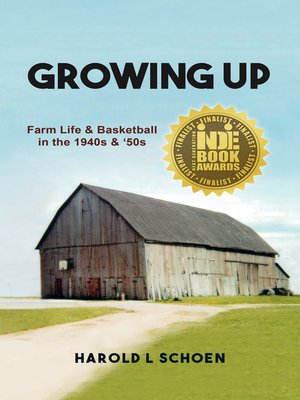
Sign up to save your library
With an OverDrive account, you can save your favorite libraries for at-a-glance information about availability. Find out more about OverDrive accounts.
Find this title in Libby, the library reading app by OverDrive.



Search for a digital library with this title
Title found at these libraries:
| Loading... |
Hal was born in 1941. His mother and her siblings spoke German to each other into the 2000s, even though their ancestors had lived in west-central Ohio for over 150 years. No one in the family before him had attended college. Neither parent graduated from high school. From age seven or eight, Hal milked several cows by hand every morning and evening. He helped his parents and others in their neighborhood group to thresh wheat and oats and to butcher hogs among many other farm chores.Few farmers in the area had telephones until the mid-1950s, so the adults had to be constantly prepared for drop-in visits from family and friends. Since everyone in the area was Catholic, the local public elementary school was operated very much like a Catholic school. Students attended daily mass, and the parish priest taught classes in catechism and Bible history.For entertainment, the family enjoyed listening to westerns, dramas, and comedies like The Lone Ranger, The Shadow, and Father Knows Best on their large, battery-powered radio. The barn, woods, and creek were settings for imaginative, unsupervised play for the Schoen children when they had leisure time. Hal and many of his siblings developed a love of reading in spite of an environment in which reading and education were not always encouraged by the adults. They also enjoyed playing softball, baseball, and basketball just for fun.In high school, it became clear that Hal had the skill and size to be a good basketball player. In a sense, the game was no longer just for fun. He was immersed in the excitement of small-town high school basketball with its screaming fans, traditional local rivalries and hard-fought tournaments. Always a good student, Hal became interested in going to college. Basketball, via a scholarship to the University of Dayton, provided the financial means.The University of Dayton was college basketball at a very high level. The Flyers won more games than any other Division I college basketball team in the combined decades of the fifties and sixties, edging out UCLA and the University of Kentucky. After a challenging freshman adjustment and warming the bench as a sophomore, Hal was a starting forward on the 1962 NIT championship team. The NIT was then a prestigious national tournament played entirely in New York's Madison Square Garden. During his college basketball career, he played with or against such great players as Roger Brown, Jerry West, Bill Russell, Dave Debusschere, and Jerry Harkness.Growing Up ends as Hal completes his bachelor's degree. As chronicled in the book's "Afterward," he went on to a 34-year career as a Professor of Mathematics Education mainly at the University of Iowa. Two of his younger brothers earned doctorates in Mathematics. Rick Schoen is internationally renowned for his ground-breaking research work in Differential Geometry. Hal's other siblings also did well in both their professional and personal lives.The Schoen family's story is one of rising economically and educationally from humble beginnings, the American Dream. It is a story of the importance of family, hard work, tenacity, patience, education, and a college basketball scholarship. Timing, too, is an enabling factor as the equalizing effects of the Great Depression and World War Two made upward social mobility more common than ever in the two or three decades after the War.






